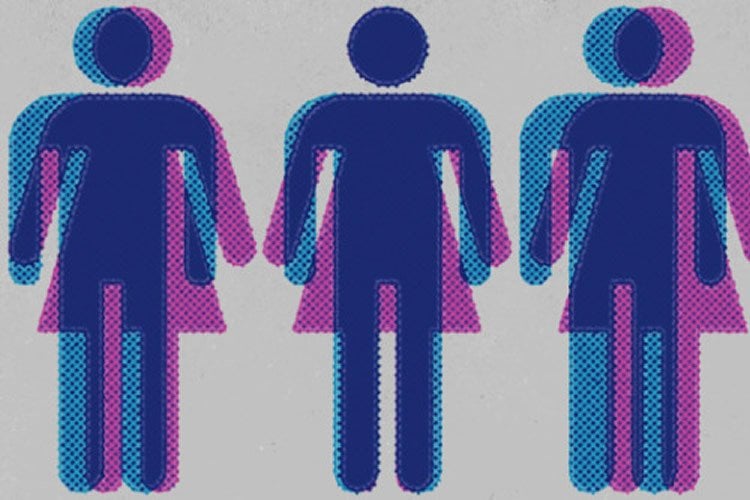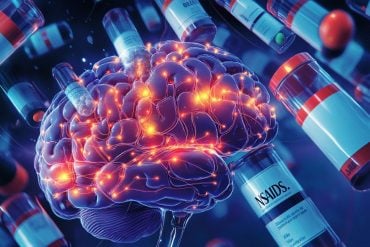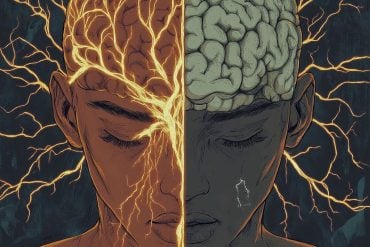Hormonal treatments administered as part of the procedures for sex reassignment have well-known and well-documented effects on the secondary sexual characteristics of the adult body, shifting a recipient’s physical appearance to that of the opposite sex.
New research published in the current issue of Biological Psychiatry indicates that these hormonal treatments also alter brain chemistry.
Researchers at the Medical University of Vienna, led by senior authors Dr. Siegfried Kasper and Dr. Rupert Lanzenberger, show that administration of the male hormone testosterone in female-to-male transsexuals raises brain levels of SERT, the protein that transports the chemical messenger serotonin into nerve cells.
In contrast, male-to-female transsexuals who received a testosterone blocker and the female hormone estrogen showed decreased levels of this protein in the brain.
SERT plays an important role in the treatment of mood and anxiety disorders, as many common antidepressants, such as Prozac, block its activity by inhibiting serotonin reuptake. In addition, some genetics studies have suggested that higher levels of serotonin transporter may increase resilience to stress and reduce risk for stress and mood disorders.
Because women are twice as likely to be diagnosed with depression as men, these changes in the levels of SERT are consistent with the increased risk for mood and anxiety disorders in females relative to males.
Lanzenberger added, “These results may explain why testosterone improves symptoms in some forms of depression. Our study also increases our knowledge on the role of sex hormones in sex differences of mood disorders.”

Overall, these findings suggest that when people switch from female to male, their biology changes in a way that is consistent with a reduced risk for mood and anxiety disorders, whereas the reverse happens when males switch to females.
“This study is the first to show changes in brain chemistry associated with the hormonal treatments administered in the sex change process,” said Dr. John Krystal, Editor of Biological Psychiatry. “It provides new insight into the ways that the hormonal differences between men and women influence mood and the risk for mood disorders.”
Source: Rhiannon Bugno – Elsevier
Image Source: The image is credited to Children’s Hospital of Los Angeles and is adapted from a previous Neuroscience News press release
Original Research: Full open access research for “High-Dose Testosterone Treatment Increases Serotonin Transporter Binding in Transgender People” by Georg S. Kranz, Wolfgang Wadsak, Ulrike Kaufmann, Markus Savli, Pia Baldinger, Gregor Gryglewski, Daniela Haeusler, Marie Spies, Markus Mitterhauser, Siegfried Kasper, and Rupert Lanzenberger in Biological Psychiatry. Published online September 24 2015 doi:10.1016/j.biopsych.2014.09.010
Abstract
High-Dose Testosterone Treatment Increases Serotonin Transporter Binding in Transgender People
Background
Women are two times more likely to be diagnosed with depression than men. Sex hormones modulating serotonergic transmission are proposed to partly underlie these epidemiologic findings. Here, we used the cross-sex steroid hormone treatment of transsexuals seeking sex reassignment as a model to investigate acute and chronic effects of testosterone and estradiol on serotonin reuptake transporter (SERT) binding in female-to-male and male-to-female transsexuals.
Methods
Thirty-three transsexuals underwent [11C]DASB positron emission tomography before start of treatment, a subset of which underwent a second scan 4 weeks and a third scan 4 months after treatment start. SERT nondisplaceable binding potential was quantified in 12 regions of interest. Treatment effects were analyzed using linear mixed models. Changes of hormone plasma levels were correlated with changes in regional SERT nondisplaceable binding potential.
Results
One and 4 months of androgen treatment in female-to-male transsexuals increased SERT binding in amygdala, caudate, putamen, and median raphe nucleus. SERT binding increases correlated with treatment-induced increases in testosterone levels, suggesting that testosterone increases SERT expression on the cell surface. Conversely, 4 months of antiandrogen and estrogen treatment in male-to-female transsexuals led to decreases in SERT binding in insula, anterior, and mid-cingulate cortex. Increases in estradiol levels correlated negatively with decreases in regional SERT binding, indicating a protective effect of estradiol against SERT loss.
Conclusions
Given the central role of the SERT in the treatment of depression and anxiety disorders, these findings may lead to new treatment modalities and expand our understanding of the mechanism of action of antidepressant treatment properties.
“High-Dose Testosterone Treatment Increases Serotonin Transporter Binding in Transgender People” by Georg S. Kranz, Wolfgang Wadsak, Ulrike Kaufmann, Markus Savli, Pia Baldinger, Gregor Gryglewski, Daniela Haeusler, Marie Spies, Markus Mitterhauser, Siegfried Kasper, and Rupert Lanzenberger in Biological Psychiatry. Published online September 24 2015 doi:10.1016/j.biopsych.2014.09.010






